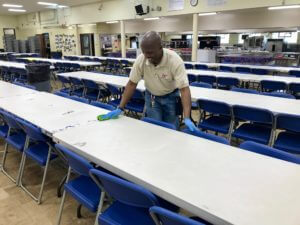It’s that time of year again; Cold and Flu season. It seems like no matter where you turn, there is someone sneezing, coughing, and sniffling. It may seem inevitable that illness will seek you out in densely populated indoor areas like work or school, but hold on hope! If your janitorial program is prepared, they can help to reduce the risk of spreading illness throughout your facility.
Every building has those “high-touch” areas that a janitorial professional should take extra care to clean and disinfect daily, year-round. These areas can include but are not limited to: water fountains, door handles, faucet knobs, and even shared office equipment, furniture, and supplies. According to Bill Balek of ISSA, high-touch surfaces should be cleaned and disinfected at least two times per day during peak Cold and Flu season. As the weather gets colder, our highly trained staff at C.M. Cleaning know to target these areas specifically. In doing so, we can help to reduce the spread of germs and bacteria that contribute to Cold and Flu. Additionally, C.M. Cleaning utilizes a program to minimize cross contamination. For example, by utilizing color coded micro fiber cloths for different surfaces throughout your facility, and different wet mops for different areas of flooring, we ensure that the same germs found on a bathroom floor are not being spread to your building’s cafeteria by the same wet mop. By tailoring a program like this to your facility, we can ensure that high-touch areas are properly cleaned multiple times during your work day.




